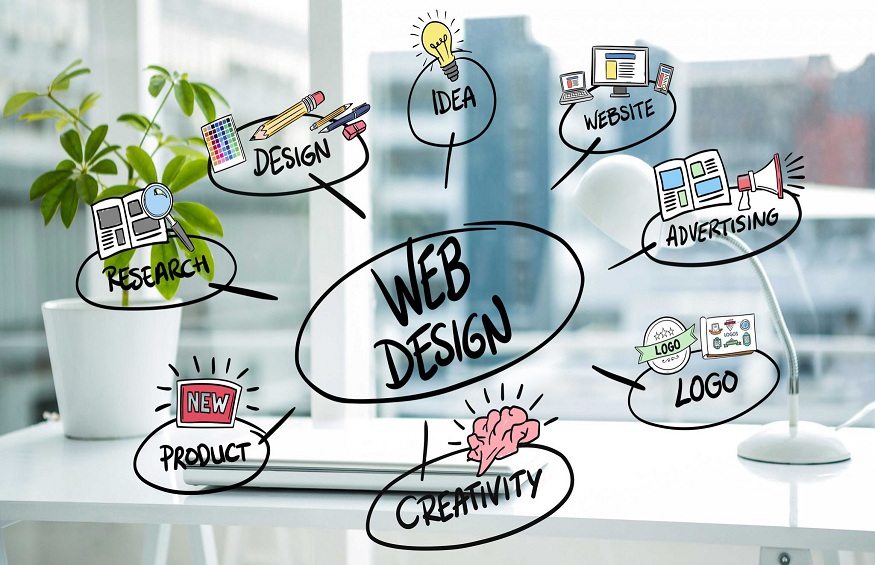The Role of Intuitive Design in eCommerce Success
Having a strong online identity is becoming more important in today’s competitive digital market. With more competition comes a greater emphasis on things like clear and concise product descriptions and a streamlined checkout procedure. The services of a professional eCommerce web design company become crucial at this point.
A customer’s choice to visit your website and take any further action depends on how nicely your website is designed. What’s at the center of these happy marriages? Convenient layout. We’ll be delving into its critical function in making sure eCommerce thrives in the digital era in the next sections.
Understanding Intuitive Design
When we think about the elements that make up an outstanding online shopping experience, the term “intuitive design” often comes to the forefront. Intuitive design is about creating a user interface that feels second nature to the user. It’s about anticipating the needs and preferences of users before they even recognize them. The goal is to provide a seamless, frustration-free interaction, something every eCommerce website designing company strives for.
The difference between intuitive design and standard design is profound. While standard design might tick all the functional boxes, intuitive design goes a step further, fostering a deep connection between the user and the platform. For an eCommerce website design company, this translates to more satisfied customers and, ultimately, better sales.
The Principles of Intuitive Design
In today’s competitive digital marketplace, an eCommerce design website should prioritize intuitive design principles to ensure users don’t just visit but also easily navigate, make purchases, and return. One core principle is simplification; this entails presenting only necessary design elements and minimizing clutter, making the shopping journey straightforward and pleasant.
Another essential principle is familiarity. Leveraging familiar icons, symbols, and navigational patterns reduces the learning curve for visitors, allowing them to focus on what they came for—shopping. Lastly, consistency in design is crucial. An eCommerce design website must maintain uniformity across all pages, reinforcing a sense of reliability and predictability for the user.
Intuitive Design & User Experience
Navigating through the intricacies of intuitive design, it’s easy to see its unmistakable impact on user experience (UX). A well-crafted, intuitive design paves the way for users to move smoothly through a website, reducing friction and making the path from browsing to purchase seamless and straightforward. It’s not just about visual appeal; it’s about creating a silent guide that effortlessly leads users where they need to go without them having to search endlessly for an “eCommerce consultant near me.”
Meanwhile, recognizing the fine line between an intuitive and a complex design might be challenging for some businesses. This is where insights and expertise from professionals in the field can transform a virtual storefront into a conversion machine. Reflecting on the importance of optimized UX, an intuitive design isn’t merely a choice; it’s a vital component that bridges the gap between user satisfaction and business success, especially in the hyper-competitive world of eCommerce.
How Intuitive Design Benefits SEO
When users search online for an “eCommerce website development near me,” they’re not only seeking technical proficiency but also a keen sense of intuitive design. Intuitive websites, with their streamlined layouts and user-centric navigation, often translate to faster page loading times. This speed optimization is a crucial factor that search engines consider when ranking sites.
Moreover, an intuitively designed website ensures that visitors can easily find what they’re looking for, leading to prolonged session durations and deeper page explorations. Both are key user engagement metrics that search engines value, hence enhancing the website’s SEO performance.
The Economic Impact of Intuitive Design
Intuitive design goes beyond mere aesthetics; it’s a critical factor that directly impacts an online store’s bottom line. When visitors find a website easy to navigate and interact with, they’re more likely to complete purchases. Many businesses, realizing the economic advantages, now look online for an “eCommerce website design near me” to optimize their platforms for a seamless user experience.
Secondly, as consumers spend more time on a well-designed site, the opportunities for upselling and cross-selling grow significantly. With a reduced need for customer service interventions and higher conversion rates, intuitive design undeniably plays a pivotal role in maximizing eCommerce profitability.
Conclusion
In the ever-evolving landscape of eCommerce, prioritizing intuitive design is no longer just an option—it’s a necessity. As businesses compete in the digital arena, those equipped with a user-centric, intuitive interface stand a better chance of captivating their audience, driving conversions, and ensuring sustained success. Don’t let your business fall behind; embrace intuitive design today.

